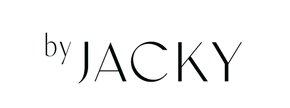THEIR STORY - The Path to Ethical Gold: Discovering Fairmined

In an era where ethical choices are becoming increasingly paramount, consumers are seeking ways to minimize their impact on the world. An example of an industry that often finds itself at the heart of this ethical discussion is gold mining. Fortunately, there's then a beacon of hope on the horizon in the form of Fairmined.
Fairmined represents a revolution in the gold industry. It takes into account an ethical approach to mining, where fair trade practices, respect for human dignity, and environmental stewardship harmoniously match with the extraction of this precious metal. In this blog post, we'll embark on a journey through the realm of Fairmined, above all, showcasing how this movement is reshaping how we value and consume ethical gold. Get ready for an exploration of a more sustainable future with Fairmined!
How does your organization assess and certify ethical gold mining? Can you tell us more about the criteria?
ARM has two standards for sustainable mining. CRAFT sets initial requirements for sustainability commitment, mitigating risks outlined in OECD Guidance Annex II. Fairmined, for sustainability leaders then, has higher health, safety, environmental management, and corporate governance standards.
As per ARM, sustainable gold adheres to environmental practices, safeguards miner health, and respects human rights. Fairmined gold reinvests resources in mining communities, therefore reducing inequalities.
Fairmined gold meets Fairmined Standard 2.0 and CRAFT Code, following ISEAL best practices. It aligns with international and national mandates defending human rights, including OECD Due Diligence Guide and EU regulation on conflict minerals (from January 1, 2021).
What steps does your organization take to ensure that gold mining and production processes do not have a harmful impact on the environment and local communities?
ARM's standards and assurance system guarantee full adherence to best practices. Mining organizations opting for ARM therefore undergo a Comprehensive Mining Assessment, identifying key sustainability gaps. A tailored Sustainability Plan is then created. ARM offers technical support for plan implementation and conducts a pre-audit upon completion. An independent auditing firm is hired after that for third-party certification, ensuring transparency. The Fairmined certificate is above all exclusively granted to organizations passing the third-party audit.
The sustainable mines program upholds rigorous environmental protection standards, bolstered by the Fairmined Ecological Certification. For extra details, visit the site.
Can you share specific examples of ethical gold mining projects? What makes these projects special compared to traditional gold mining?
The Fairmined premium is an economic incentive for certified mining organizations, promoting social, economic, and environmental development in communities close by. For every kilogram of gold sold, organizations receive $4,000. This is then invested to improve practices and sustainability. Each organization forms a committee representing all involved parties to decide how to share the premium. This leads to the development of a Fairmined Premium Investment Plan, prioritizing actions and investments for long-term goals:
- Strengthening the mining organization (productivity and Fairmined standard compliance).
- Wellbeing of workers and their families (improving quality of life).
- Community benefits (projects benefiting surrounding communities).
For details, refer to the Fairmined Premium Report 2021.
How does your organization ensure that sustainable gold is distributed transparently and traceably from the mine to its final processing into jewels?
The Fairmined Standard 2.0 emphasizes traceability. Certified mining organizations must prevent mixing Fairmined gold with other sources through rigorous Internal Control System criteria. This is verified on-site by an external auditor with supporting documents provided for review. For example:
- Mining area sketch for Fairmined gold production.
- Identification of Certified Production System areas (mines, tunnels, processing plants, transportation routes, etc.).
- Physical traceability of minerals through the Internal Control System.
- Workflow chart detailing certified mineral processes.
Furthermore, the entire Fairmined supply chain is certified. This ensures that gold moves from a Fairmined mine to a Fairmined refiner and then to a Fairmined Licensed Brand, all in compliance with the Fairmined Standard, guaranteeing no mixing with other sources.
What educational initiatives or resources has your organization developed to make people aware of the benefits and meaning of sustainable gold?
Since 2014, ARM has operated a training system to educate stakeholders about responsible supply chains involving Artisanal and Small-scale Mining (ASM). They offer virtual courses and forums based on ARM standards, making it possible for over 300 people in 2023 to grasp the challenges faced by ASM communities and the importance of supporting sustainable mining.
ARM ensures ASM miners are part of national and international discussions on responsible mineral supply chains, providing insights from mine visits. Sharing these experiences of mining communities directly with downstream actors is crucial for ARM.
They also provide exchanges between jewelers and responsible ASM sites to promote sustainable mineral production and its positive impact on mining communities. This strategy raises awareness about responsible mining.
ARM's virtual platform and ongoing dialogue between ASM miners and downstream supply chain actors play a vital role in educating people about the benefits of sustainable mining for this reason.
The Fairmined Connect platform, created by ARM, ensures traceability of metals from certified mining organizations to the final consumer. All actors in the Fairmined supply chain must therefore report their sales and purchases of certified metals.



